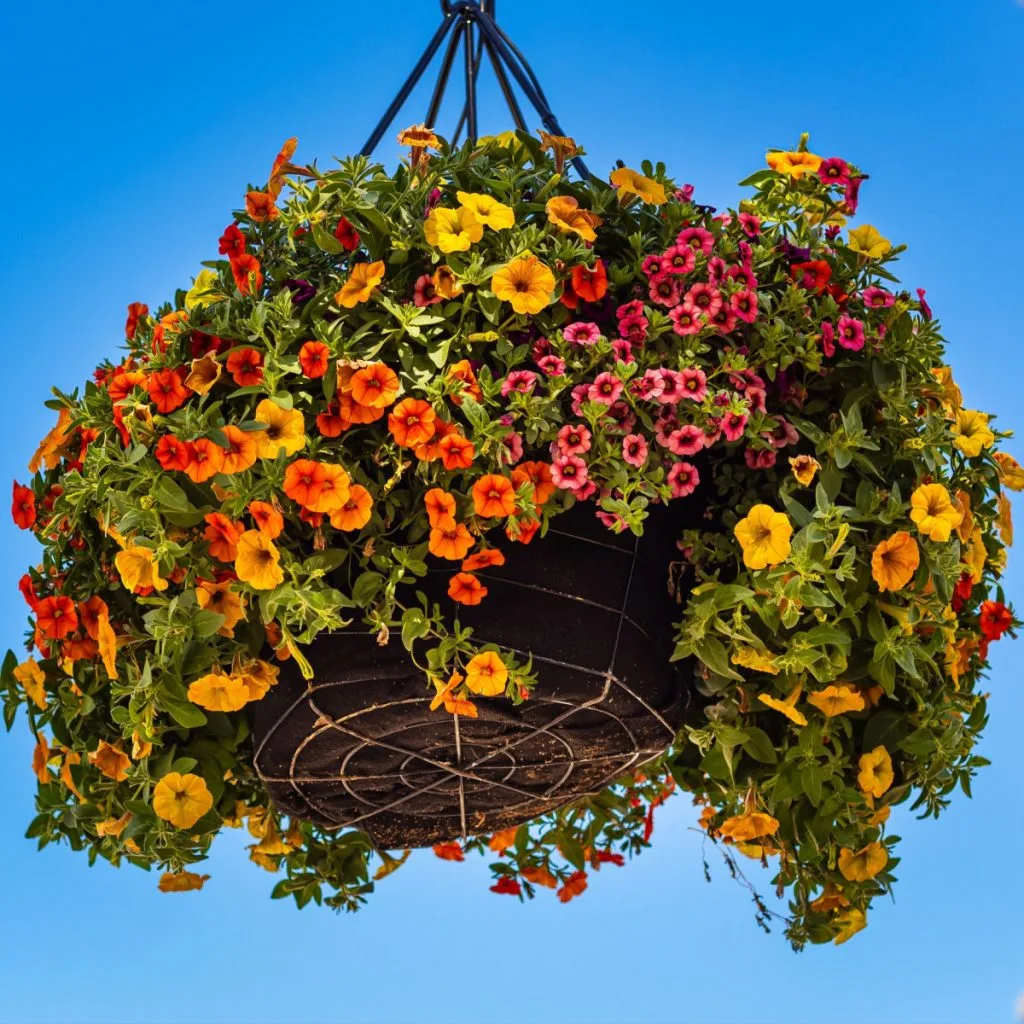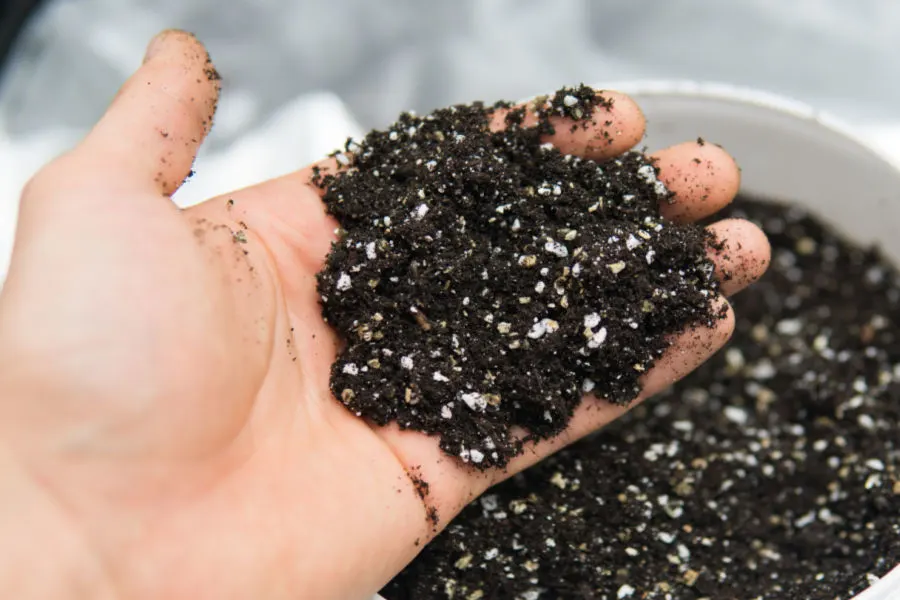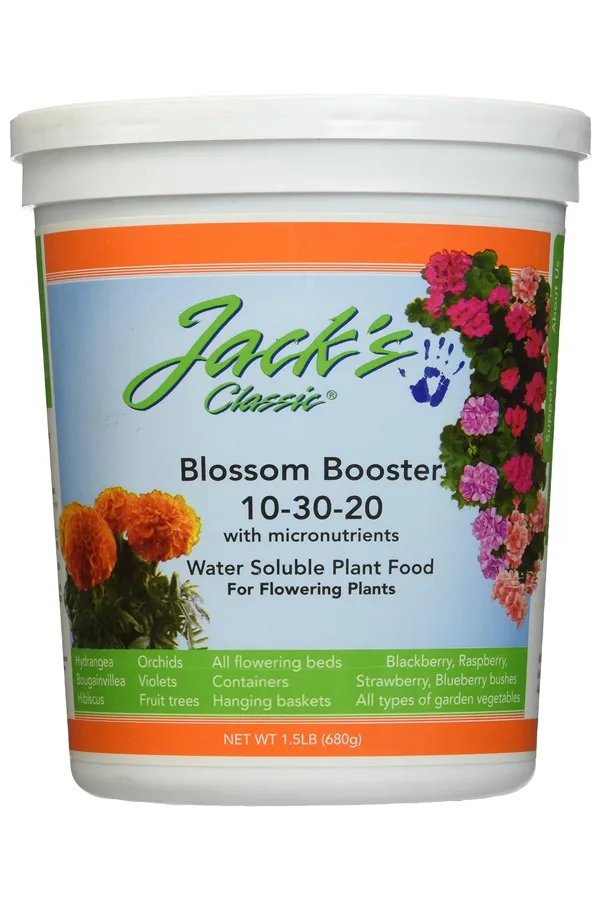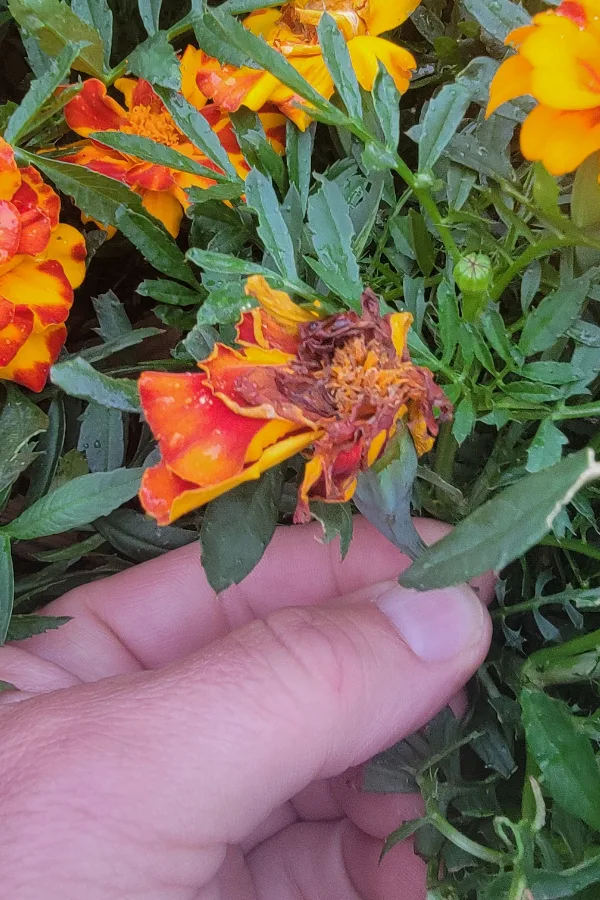Are you looking for a few simple solutions to keep your hanging baskets healthy, vibrant, and most importantly, blooming all summer long this year?
Hanging baskets are one of the most popular ways for gardeners to add big flower power – no matter where they might live. After all, even if you live in a tiny high rise apartment in the middle of a big city – as long as you have a balcony, you can grow a hanging basket.
But no matter where gardeners might grow their flowering baskets, they all share one frustrating and all too common problem every single growing season – and that is how to keep their gorgeous baskets from withering away to nothing before even half of the summer is over!

Let’s face it, there is nothing more discouraging than watching a flowering basket full of life and color fade away to a shell of its former self. For so many, baskets that were once blooming wildly in May & June suddenly become straggly and weak by mid-summer.
Not only is it sad to watch – it’s hard on the garden budget too! Hanging baskets can be extremely expensive to purchase. And even if you plant your own, it can be costly to have to replace the flowers in mid season.
But here’s some good news – with just a few simple tips, you can more than keep your baskets flowering strong from spring all the way into late fall – and keep your landscape alive in color, all without breaking the bank!
3 Simple Secrets To Keep Hanging Baskets Blooming Big All Summer
#1 Fertilizing – Hanging Basket Care
Plain and simple – without additional fertilizer applied throughout the growing season, hanging baskets will not continue to bloom.
Hanging baskets, just like flowers planted in containers and raised beds, have limited soil fertility. Because of that, they need to be fed in order to stay healthy. Even if you use the best planting soil mix right from the start, the soil will run out of power. And faster than you might ever think!

Thankfully, that is exactly where fertilizing can save the day. But when and how you fertilize is extremely important. In fact, it can make a huge difference in not only how your baskets perform and flower, but also in just how long they can last through the summer and fall.
The path to success revolves around feeding your plants so that they get the nutrients they need without under or over fertilizing. If you apply too light of an application of fertilizer, your plants will struggle to flower. And if you apply the wrong type of fertilizer, it can have the same effect – failing to give them the nutrients they need for producing buds and flowers.
However, if you give your baskets too much fertilizer at one time, it will unfortunately grow plants too quickly. The result? A massive plant that will outgrow its surroundings by mid-summer if not sooner! Sound complicated? It’s actually not – especially when you simply fertilize low and slow.
Low, Slow & Consistent Feedings – 3 Simple Secrets To Keep Hanging Baskets Blooming Big
There are two major keys to fertilizing hanging baskets. The first is to use a liquid fertilizer. Liquid fertilizers work through the roots and the foliage of plants. And this double dose of power can help keep them strong and the blooms coming on.

The second key is to use the right kind of fertilizer. For blooms, that means choosing a liquid fertilizer with a higher phosphorous and potassium number than nitrogen. Look for N-P-K liquid fertilizers that are designed for blooming – and that means a higher number of phosphorous and potassium, and a lower number for nitrogen.
Phosphorous and potassium help with blooming. Nitrogen is more geared toward growth. By keeping it lower and the other two higher – you help grow more flowers and blooms than just big green growth. A 10-20-20 or 10-30-20 N-P-K set of numbers is perfect! Affiliate Link: Jacks Bloom Booster 10-30-20 Liquid Fertilizer
Last but not least, fertilize consistently but with a weaker dose. Power your plants ever two weeks with liquid fertilizer. But mix the solution to half of the recommended strength. This will keep a lower but steady dose of energy that your plants will thrive on.
#2 Consistent Watering – 3 Simple Secrets To Keep Hanging Baskets Blooming All Summer
Just as important as fertilizing is watering! In fact, the quickest way to weaken a hanging basket plant is to let it go too long without water. Or to water it too much!
Get in the habit of watering your baskets at the same time every day. Not only does this help the plant with regular watering, but it also helps you remember to do it. As for the best time to water, it’s in the early morning to help plants can withstand the heat of the day.
Listen In To Our Podcast Below On How To Fertilize Hanging Baskets For Even More Great Tips!
As plants get bigger, they made need a second dose of water in the evening. But as important as regular watering is, be careful not to overwater. Overwatering will cause yellowing of the leaves. This is because the roots are swollen and can’t absorb water or nutrients.
With hanging baskets, the best way to tell if they need water is to check the moisture content down at their root level. A simple and highly accurate way to do this is with an inexpensive soil moisture meter. It can give you an instant reading to tell you if they need watering or not. Affiliate link: Instant Moisture Soil Meter
Again, being consistent with watering and fertilizing are the two most important tasks of all to keep plants healthy – but to help them bloom more – you also need to deadhead those old blooms regularly!
Deadheading – 3 Simple Secrets To Keep Hanging Baskets Blooming Big All Summer
When it comes to getting new blooms to appear, deadheading is a huge help! Deadheading is the practice of removing spent blooms from plants. It’s important because when you allow old blooms to remain, they continue to drain resources and energy from the plant.
Both annuals and perennial flowers will continue to spend energy on old blooms and stems. As long as they are on the plant, they will try to heal them as they slowly die. But by simply removing the old flowers, you stop the flow of energy. Instead, the plant then begins to use its power to create new blooms.

The best part of all is that deadheading spent blooms is easy. In fact, most will fall off with just a tug of your fingertips. By doing this simple task every three to five days, you will make way for a whole new flush of blooms – and lasting color for your plant!
And if your hanging baskets do outgrow their container – don’t just throw them away – replant them! It’s actually quite easy to repot into a large basket, or simply plant them into your flowerbeds to enjoy for the remainder of the season. See our article: How To Replant Overgrown Hanging Baskets
Here is to getting the most from your hanging baskets this year – and to keeping them blooming big right into fall!
Simple Garden Life
Follow Our Facebook Page For Even More Great Tips! Simple Garden Life Facebook Page
Simple Garden Life is a website dedicated to keeping gardening fun, simple and enjoyable! We publish two new articles each week along with a new garden podcast episode every two weeks. This article may contain affiliate links.
